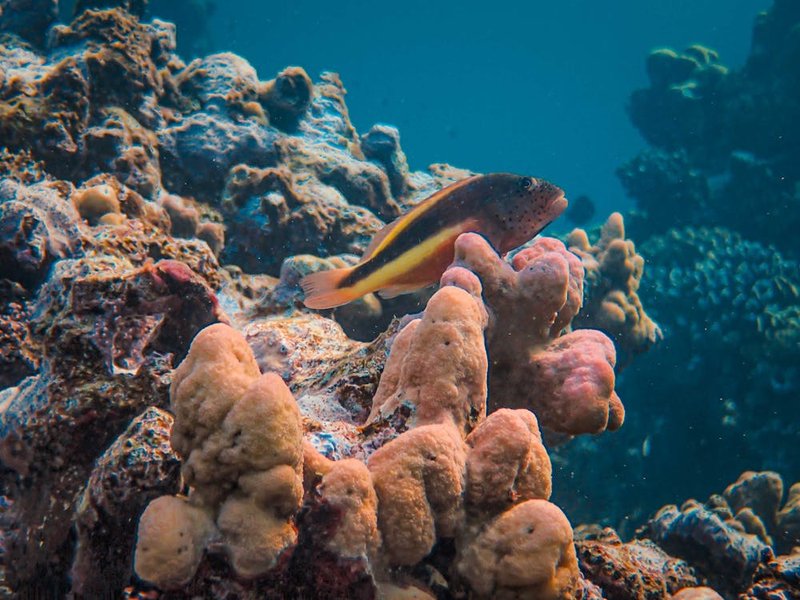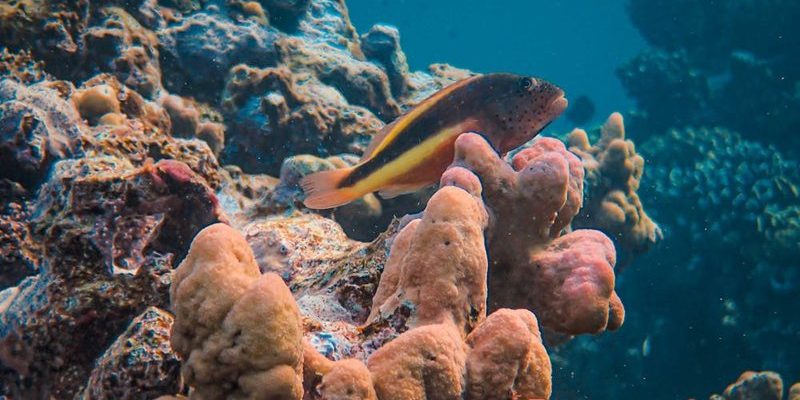
Think of your reef tank as a carefully curated artwork. Just like choosing colors that complement each other, selecting fish that get along with corals is essential for a harmonious underwater display. Hawkfish, particularly those from the Cirrhitidae family, add lively character to any tank, but they can also pose challenges. In this article, we’ll dive deep into what makes these fish special, how they interact with coral, and tips on creating a peaceful reef environment.
Understanding the Hawkfish
Hawkfish are a diverse group of fish, with several species available in the aquarium trade. They’re often recognized for their vibrant colors and active personalities. From the classic Falco hawkfish to the less common Longnose hawkfish, these fish are generally hardy and adaptable, making them a favorite among both novice and experienced aquarists.
One of the defining traits of hawkfish is their distinctive body shape and large eyes. This structure allows them to spot prey from a distance. You might notice them perched on corals or rocks, waiting patiently for small crustaceans to pass by—their hunting method is almost like a cat stalking a mouse. However, this behavior can lead to some compatibility issues, particularly with certain types of coral.
All species of hawkfish share a few commonalities. They tend to be semi-aggressive, which means that while they can coexist with many tank mates, they may also bully smaller or more timid fish. If you’re considering adding a hawkfish to your reef tank, understanding their behaviors is crucial to ensure a peaceful environment.
How Hawkfish Interact with Coral
Now, here’s the thing: not all hawkfish are created equal when it comes to coral compatibility. While some species can peacefully coexist with corals, others may view them as a potential meal or resting spot, causing stress or even damage to your precious corals.
Generally, hawkfish are known to perch on corals rather than actively destroy them. However, they can be a bit too boisterous for delicate species. For instance, the Falco hawkfish tends to leave most corals alone if they are well-established. On the other hand, the Longnose hawkfish may nip at coral polyps, especially if hungry or stressed.
Before introducing a hawkfish to your reef tank, consider the types of corals you have. Hardy corals like zoanthids or mushroom corals often fare better with hawkfish than more delicate species like SPS (Small Polyp Stony) corals. Keeping a close eye on interactions when you first introduce a hawkfish is essential to ensure your corals aren’t feeling threatened.
Creating a Balanced Reef Environment
Having a hawkfish in your reef tank isn’t just about compatibility; it’s also about creating an environment where all inhabitants can thrive. Here are a few tips to help you achieve that balance:
- Adequate Space: Make sure your tank has plenty of space and hiding spots. This helps lessen territorial disputes and gives smaller or shyer fish an escape route.
- Introduce Tank Mates Carefully: When adding new fish, consider their temperament. Pairing hawkfish with docile tank mates can minimize aggression.
- Monitor Feeding: Ensure you’re offering enough food so the hawkfish doesn’t look at your corals as a food source. Regular feeding can keep their focus on prepared foods instead.
- Regular Maintenance: Keeping your tank clean and well-maintained supports coral growth and overall health, making your reef less susceptible to issues.
By following these practices, you can create a dynamic yet peaceful environment where both hawkfish and corals can shine.
Choosing the Right Hawkfish for Your Reef
If you’re set on adding a hawkfish to your reef tank, it’s worth considering which species might be the most suitable. Some hawkfish are known to be more reef-safe than others. For example, the Falco hawkfish is generally considered one of the best options for reef tanks. Its lively personality and relatively gentle disposition make it a popular choice.
On the flip side, some species, like the Tassled hawkfish, can be more aggressive and prone to picking at corals. It’s essential to research each species and assess your aquarium’s unique environment before making a decision.
Another important factor is the size of your tank. A larger tank offers more space, reducing territorial behavior. If you’re in a smaller tank, you might want to stick with less aggressive species or focus on gentle tank mates.
Potential Issues and Troubleshooting
Even in the best setups, introducing a hawkfish can sometimes lead to unexpected challenges. If you notice your hawkfish showing aggressive behaviors towards tank mates or nipping at coral, it’s important to act quickly.
Here are some common issues and solutions:
- Aggression: If your hawkfish is bullying smaller tank mates, try rearranging the tank decor to disrupt established territories.
- Coral Damage: If you see signs of coral stress or damage, consider adding more hiding spots for the hawkfish or potentially relocating it to a species-specific tank.
- Water Quality: Always keep an eye on your water parameters, as poor water quality can exacerbate aggressive behaviors and stress in fish.
By being proactive and observant, you can address issues before they escalate, ensuring a healthier tank environment.
Final Thoughts on Hawkfish and Coral Compatibility
So, is the hawkfish reef safe? The answer isn’t cut and dry. With careful selection, monitoring, and proper tank management, they can coexist with corals. It’s all about finding the right species, understanding their behaviors, and creating a balanced environment.
Remember, maintaining a reef tank is like nurturing a garden—it requires patience, observation, and a bit of trial and error. If you give your hawkfish and corals the right conditions, you’ll be rewarded with a stunning underwater display full of life and color.
With the right knowledge and preparation, you can enjoy the beauty of hawkfish without compromising the health of your vibrant coral reef. Happy fishkeeping!

